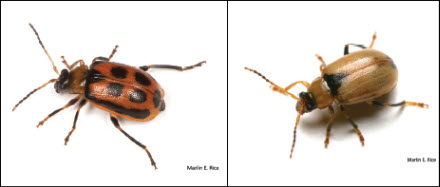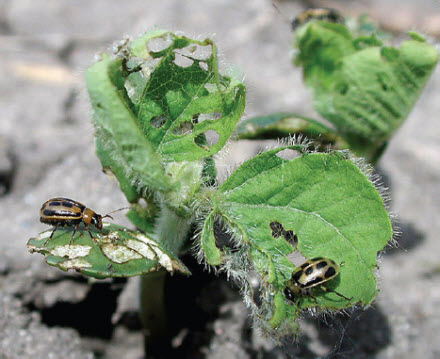Make the most of your seed investment with a powerful, proven formulation. LumiGEN® seed treatment protects seed from pests, diseases and challenging soil conditions.
Learn More
Something went wrong. Please try again later...
Key Points
- Bean leaf beetle is a pest of soybean in most soybean growing regions of the United States. There may be 3 generations in the southern U.S., 2 generations in the central Corn Belt (Nebraska, Iowa, Illinois), and only 1 generation in the northern Corn Belt.
- Adults feed on cotyledons, leaves, and the external surface of pods. Larvae feed underground on nodules and roots.
- Adult bean leaf beetles also can transmit a soybean pathogen - bean pod mottle virus - which causes “stay green” and delays soybean maturity.
- Following mild winters, which contribute to higher than average survival, bean leaf beetle populations can reduce plant populations by feeding on newly-emerging soybeans, especially in early-planted fields.
- During vegetative growth from the V2 stage to flowering, soybeans can tolerate from 40% to 60% defoliation without yield loss. Bean leaf beetles rarely, if ever, cause this degree of defoliation.
- Second-generation beetles usually peak during soybean pod-fill stages, resulting in injured pods. Yield loss can occur at this time (usually during August in Midwestern states).
- Scouting regularly for bean leaf beetle and spraying, if necessary, is recommended to address this problem insect. A new strategy to treat second generation beetles based on first generation beetle numbers has been proposed.

PIONEER® brand products are provided subject to the terms and conditions of purchase which are part of the labeling and purchase documents.
The foregoing is provided for informational use only. Please contact your Pioneer sales professional for information and suggestions specific to your operation. Product performance is variable and depends on many factors such as moisture and heat stress, soil type, management practices and environmental stress as well as disease and pest pressures. Individual results may vary.


